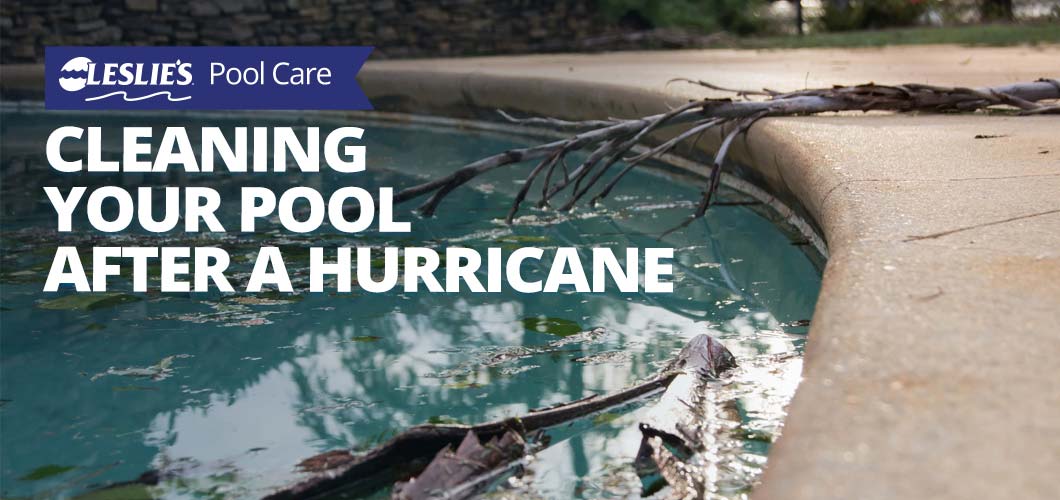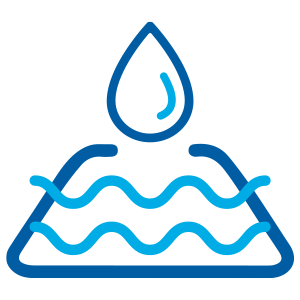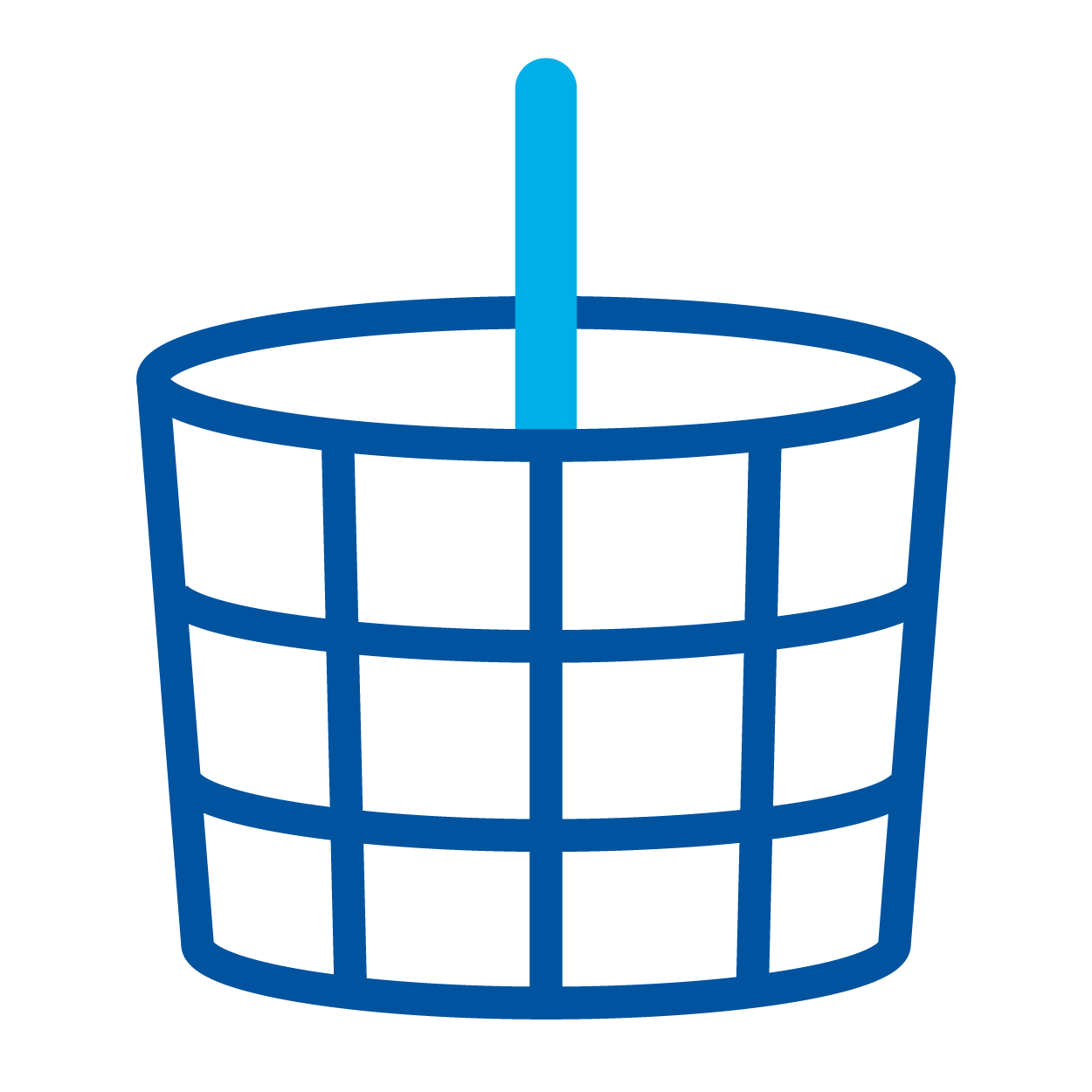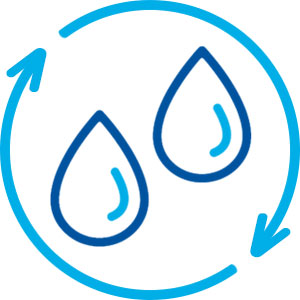
Cleaning Your Pool After a Hurricane
When taking inventory after a hurricane, the condition of your pool likely isn't one of the first things on your mind — the health of your family and the state of your home are understandably a top priority. But cleaning your pool after a hurricane is just one important step of hurricane recovery, for both health and recreation purposes.
Hopefully, you were able to prepare your pool for the storm. But hurricanes can wreak havoc on even the cleanest and most well-maintained swimming pool. Storms that bring high wind and rain — such as hurricanes — can sweep large amounts of dirt and debris into your pool. Large storms may even cause flooding, which can generate an even longer list of potential contaminants, including mud, silt, and germs.
Keeping your pool clean and safe can be challenging on its own. After times of severe weather or natural disasters, it may seem next to impossible. Leslie's is here to help get your pool water back to crystal clear, no matter how dirty it might look. Below is the complete list of easy-to-follow tips, which includes these key points:

Don't drain your pool water.

Clean the pool, and empty the pump and skimmer baskets.

Check electrical equipment, and restore power when it's safe to do so.

Balance water chemistry and shock the pool.

Run the circulation and filtration system until the water is clear.
Do Not Drain Your Pool
Even if your water is filthy and saturated with dirt and debris, you should never remove all the water from your swimming pool when cleaning up after a hurricane. Although it may be tempting to drain your pool and start over with clean water, removing the water from your pool can be dangerous. Emptying a pool after a large storm can lead to your pool “floating” or “popping” out of the ground due to an elevated water table. Your best bet is to clean the water currently in your pool, no matter how dirty it may look.
PRO TIP: If you're dealing with ocean contamination (excessively high Total Dissolved Solids with a salinity of 35,000 ppm), some other situation where the water is not recoverable, or you find extensive pool damage that may require draining and repair, always consult with a pool service professional first to avoid permanently damaging the pool structure.
Skim Leaves and Debris from Pool Surface
The first step to getting your pool back in shape after severe weather is to remove any debris floating on the pool surface or that has settled to the bottom of the pool. Using a leaf skimmer or a pool net, along with an extendable telepole, rake the leaves and debris from your pool. You may also need to clean out the skimmer basket due to the amount of debris in your pool. If your tap water service works, use a leaf bagger with a fine mesh bag to remove large debris and small dirt particles. You can also vacuum later in the cleaning process.
If you don't have electricity...
If there is no electricity available when you clean your pool after a hurricane, clear out as much debris as you can, and superchlorinate the pool water. Bring the Free Available Chlorine (FAC) level up to at least 5–10 ppm (parts per million) using dichlor shock or liquid chlorine. Maintain FAC levels between 2–4 ppm to prevent algae and hinder mosquito larvae growth. To avoid problems with liner bleaching or surface discoloration, stir up the water with a pool brush or battery-operated pool cleaner. Once the power is restored, complete the remainder of the steps.
PRO TIP: For more helpful tips on protecting your pool while you're without electricity, check out our blog post on maintaining a pool without equipment.
Clean Pump Strainer and Skimmer Baskets
Before running your filtration system, it's a good idea to clean out the pump strainer and the skimmer baskets. These will most likely have a good deal of debris from the hurricane. And, if not properly cleaned, this debris could cause your system to clog up.
Check Electrical Equipment and Restore Power
Before turning the power to your pool equipment back on, you'll want to remove all plastic coverings and check for any signs of water damage to your equipment. If the equipment is dry and everything looks normal, you should be fine to turn the power back on and start running your pool pump.
If there are any signs of water or water damage, do NOT turn the power back on. Instead, consult a licensed electrician or pool professional, and have them come out to your house to check your equipment. This will help prevent potential injuries, as well as serious damage to your pool equipment.
Clean and Backwash Filter
Due to the large amount of dirt, debris, and small particles in your water, your filter will most likely need to be cleaned or backwashed before running the filtration system. You may need to do this several times during the cleanup process, depending on the severity of the storm. When cleaning or backwashing the pool filter after a hurricane, make sure to reference the manufacturer’s operation guide to ensure you're cleaning it correctly.
If you use a DE filter, now would be a great time to replace the DE filter media. If you use a cartridge filter, it's a good time to remove the cartridges and clean them individually, or even replace the cartridges if they're showing signs of reduced filtration ability.
Check the Water Level and Remove Water as Necessary
During the course of a hurricane or severe tropical storm, a good amount of water will likely find its way into your pool. This is OK! All it means is that you should remove the excess water and return your pool to its normal level. Using a submersible pump or a siphon, take out the excess water and bring your water level back to normal. This should be about halfway up your skimmer opening or the pool tile. However, before doing this, see the next section...
Vacuum and Brush Pool Walls and Floor
Now is the time to start cleaning up the fine dirt and debris particles the hurricane brought into your pool. To do this, start by vacuuming the dirt and debris off the bottom of your pool with a pool vacuum or automatic pool cleaner. Begin at the shallow end of the pool, and always move toward the deep end.
If your filter system is so equipped, it may be a good idea to vacuum directly to waste instead of running the debris through the filter, as this will clog the filter quickly. To accomplish this will require the water level to be higher than normal as the pool will be draining as you vacuum to waste. If your water level is already elevated from the storm, you can simply vacuum to waste instead of lowering the water levels with a submersible pump. Otherwise, if water levels are already where they should be, grab a garden hose to refill the pool as you vacuum.
If you cannot vacuum the dirt and debris to waste, it is important to check the pressure gauge of your filter frequently, and clean or backwash your filter once the pressure is too high. After vacuuming, brush the pool thoroughly to remove dirt and debris from the pool walls, and vacuum again. Repeat this process until the water is clean and nearly clear.
Balance Water Chemistry and Shock the Pool
Correct water chemistry will help maximize the efficacy of your chlorine pool shock when you go to sanitize the pool. With the pump running, start balancing your water chemistry beginning with Total Alkalinity. After the Total Alkalinity has been brought to normal levels, between 80–120 ppm, you can easily adjust the pH, Calcium Hardness, and other aspects of water chemistry. Also address metals in the water to prevent pool stains.
Your pool may look clean and clear after a few rounds of vacuuming. But while cleaning your pool after a hurricane, there will still be a good amount of microscopic and potentially harmful organic contaminants floating around in the water. Left unchecked, this can lead to problematic algae growth, as well as potentially harmful germs in your pool. To stop the growth of these contaminants in their tracks, begin by using a powerful pool shock, such as cal-hypo shock or dichlor shock. Add enough shock to raise the chlorine level to around 10.0 ppm.
In most cases, it's best to balance the water before shocking the pool. However, if the pool is already starting to show signs of algae growth, or if it's too dirty for balancing to be effective, go ahead and add your shock to kill off any microorganisms in the water. Either way, keep the pump running throughout this entire process, and always read and follow chemical label instructions.
Run Circulation and Filtration System Until Water is Clear
Running your circulation and filtration system is the last step to achieving a clean and clear pool after a hurricane. During the cleanup process, run your pool equipment until the water is completely clear once again. This may take several days, but it is important to keep your system running the entire time. Use a powerful enzymatic water clarifier to help speed up the process.
Take extra care to check the skimmer baskets, the pump strainer basket, and the pressure of the pool filter while running the equipment around the clock. Empty the baskets as soon as they fill up with debris, and backwash your filter if the pressure gauge reads 8–10 psi higher than the clean starting pressure. This will help keep your equipment running smoothly, and will give you a healthy pool in no time!
If you have further questions on how to clean your pool after a hurricane or severe storm, call or stop by your local Leslie's. While you're there, don't forget to bring a water sample for a free AccuBlue® chemistry analysis, which will help you get your water back on track faster. No matter what you're dealing with in your pool, the experts at Leslie's are here to help.